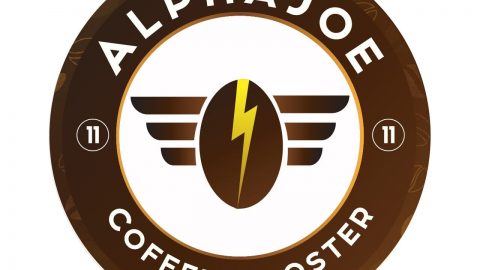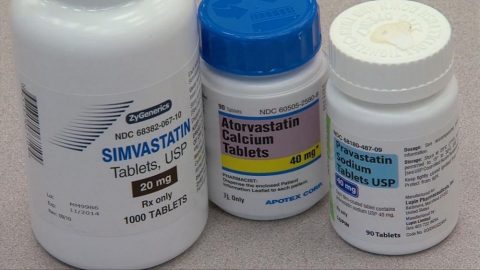One Possible Solution to Chronic Shoulder Pain: The Rotater
Aches and pains are very common to athletes and people who exercise regularly. The shoulders are a common area for chronic aches and pains. Some times the pain is due to a specific injury which needs to be diagnosed and treated by a medical professional. However, much of the time the aches and pain in the shoulders are due to muscle imbalances in the rotator cuff muscles, which can be stretched and or strengthened to both improve function and reduce pain.
Dr. Chiang covers some useful info on shoulder pain via his write up on shoulder Impingement Syndromes HERE, and there are a number of good articles on this site regarding injury prevention. One simple gizmo I have found very helpful is called The Rotater. It’s a simple yet effective method of both stretching and strengthening the rotator cuff muscles. Watch my short vid below, followed by the examples of using The Rotater for internal and external stretching. If interested in additional information on how The Rotater can be used to strengthen the shoulders, improve function, reduce pain, and so forth, hit the picture below the vids.
External Rotation Stretch Using The Rotater:
Internal Rotation Stretch Using The Rotater:
Will Brink is the owner of the Brinkzone Blog. Will has over 30 years experience as a respected author, columnist and consultant, to the supplement, fitness, bodybuilding, and weight loss industry and has been extensively published. Will graduated from Harvard University with a concentration in the natural sciences, and is a consultant to major supplement, dairy, and pharmaceutical companies.
His often ground breaking articles can be found in publications such as Lets Live, Muscle Media 2000, MuscleMag International, The Life Extension Magazine, Muscle n Fitness, Inside Karate, Exercise For Men Only, Body International, Power, Oxygen, Penthouse, Women’s World and The Townsend Letter For Doctors.
He’s also been published in peer reviewed journals.
Will is the author of the popular e-books, both accompanied by private members forum access , Bodybuilding Revealed & Fat Loss Revealed.
You can also buy Will’s other books on Amazon, Apple iBook, and Barnes and Noble.





Cool. I’ve been using a broomstick to do some shoulder stretches, but that device looks much more effective.
You linked to the same video twice, by the way.
Doh! Vid fixed, thanx.
Interesting gadget. I’m not suffering excruciating pain or even severe pain. I get a throbbing pain from my lateral delts in my left shoulder once or twice a week. This is my left shoulder that is much weaker than my right. The strange thing is it’s not the day after training but two days after, which is my next training day. It only usually lasts a few minutes if that. I can be driving or doing something quite innocuous, and I just get this twinge, it is slightly painful. What is happening here? Is this anabolic, signalling muscle growth occurring? Or is it catabolic? Is this muscle breakdown in process? I’ve tried to analyse it. Have I let my body become temporarily depleted of protein and this is causing muscle to break down and it goes to the weakest point? I take all the shakes, amino acids etc but I think i may have noticed it when I’m a bit overdue for one. But I do have a high protein diet of eggs, cottage cheese, tinned tuna or salmon during every day on top of Amino acids on waking and a Whey isolate with Maltodextrin on training day an hour prior to training, followed with more after and a Casein protein every night, but I have to say I have noticed it when I’ve forgotten the afternoon shake, though not all of the time.
If you have intense pain in your shoulder(s), I recommend you see a medical professional for assessment. I doubt it’s diet related.
As I said it’s not excruciating or intense pain, its best described as discomfort and its only in the left shoulder, my weakest, and it seems to be the lateral head. These are what need building up more than anything else on my body. I tend to do a lot of shoulder related exercises to build them up. Monday is Shoulder day anyway and after my warm up exercises that include compound exercises Front Barbell Squat & Underhand Pull-Ups, I do three quin-sets consisting of ten reps of Standing Dumbell Press, Dumbell Shoulder Rows, Seated Barbell Press, Cable Press (push out left arm only) & .Dumbell Lateral Raise. Wednesday is Back but I do exercises that tend to have Shoulders as the secondary muscle group affected. After compound exercises Barbell Squat & Wide Grip Pull-Ups I do four quad sets of Bent Over Barbell Row, Lats Pulldown, Seated Cable Pulls to head & Bench Shoulder Rows. Friday is Chest and after compound exercises Chest Dips & Push-Ups, I do five tri-sets of Seated Incline Dumbell Press, Lying Overhead Dumbell Extensions & Decline Barbell Press. Is this good? I know less is more but would I benefit by doing less?
That’s some serious shoulder volume and I’d sat injury and or at least some over use syndrome is in your future if you do that long term. Chest training hits shoulders, back training also, as does some leg work, and add to that what you are doing above, and you’re way over training shoulders. I honestly think after the first few years, unless a specific sport requires it, very little direct shoulder work is needed. You will find top coaches such as Charles Poliquin will say essentially the same thing. I know a number of top strong men competitors who do no direct shoulder work at all, and do mostly mobility work/pre hab type stuff for shoulders, and stick to training movements that work large muscle groups, which may involve shoulders; standing clean press being the most obvious example.
Rotator cuff exercises are part of my workout for long.. i do exactly the same motion with DB’s and also external and internal on the pulley.. do you really see the use for this gizmo ?
Per comments in my vid, yes, I see a use even if you do exercises in the gym. I use it for the stretching aspect vs strengthening, as I too do strengthening exercise as the gym for rotor cuff muscles.
I understand.. thx 4 the help
I saw the videos and was able to replicate the stretching function of the device using an adjustable high-low cable pully with the single hand attachment. I took off ALL the weight which means there was probably about 3-5lbs of weight and put my hand through the attachment so I was “holding” it with my wrist… just like with this device. I put my arm in position and moved my body slightly forward and let the weight pull my arm into a stretch position. Worked great. The same thing could be done at home with those stretch bands and those would give you much more control over the amount of pressure applied to the muscle.
Hey Will,
I’m all for gaining mobility in your shoulder capsule if we assume a given person needs it, but I just seriously doubt that people either
1) Know if they need it and in what form
2) Need Indiscriminate Stretching
3) If it really would be helpful to provide more motion to someone with pain whose pain is very likely not due to solely their shoulder capsule mobility
4) Need more mobility with no stability to compliment it
So this leaves me with two main questions: Does this product come with a form of assessment so people have any clue if and how much so they need to use it? & the second is if there are going to be so many posts on shoulder pain shouldn’t there be posts that have much less to do with your rotator cuff (possibly a problem, but in the scheme of things rarely the true culprit) and more to do with scapular stability and proper programming? But perhaps that’s coming up and I’m just jumping the gun.
“Does this product come with a form of assessment so people have any clue if and how much so they need to use it?”
I was very impressed with the wide range of info, from a variety of PT, Med, etc on shoulder issues of all kinds. Info on Scapular Stretch, Scapular Strengthening, anatomy, stability, etc, etc, all there. If people however have specific issues/Qs about their own needs, injuries, etc, as mentioned, should see a med professional, PT, etc.
Unless specifically contraindicated as specifically mentioned in the vid, I find most people will benefit from stretching and or strengthening rotator cuff muscles, which are generally over looked by the vast majority of active people.
” & the second is if there are going to be so many posts on shoulder pain shouldn’t there be posts that have much less to do with your rotator cuff (possibly a problem, but in the scheme of things rarely the true culprit) and more to do with scapular stability and proper programming? But perhaps that’s coming up and I’m just jumping the gun.”
This entire site is loaded with training articles, vids, etc on issues of programming (eg, volume, frequency, intensity, etc, etc) and other topics essential to setting up programs, so perhaps take some time to look around a bit. Discussions on shoulder injuries wouldn’t make up 0.01% of the BrinkZone. Good balanced programs are the best way to avoid injuries, OTS, and so forth no doubt, but I benefit from a good stretch this simple gizmo allows I can’t do as well otherwise without someone assisting me. Your mileage may vary… 🙂
Well if the product has all that info that comes along with it, great! That’s perfect. In reference to the programming mention I was speaking specifically to the discussion of how important the serratus anterior and middle and lower traps are while attempting to limit rhomboid and/or upper trap dominance for shoulder health. That along with the “do an imbalanced program with more pull and less push for a month or two with proper biomechanics” to improve stability and attempt to grossly iron out imbalance.
But then again there’s many ways to get that message across making what I’m saying relatively moot, especially if people learn proper form and programming from the rest of the site :). I was only making the point because if you’re going to get so specific and mention the shoulder and the rotator cuff with the impingement articles and this product it might be worth getting specific about proper programming and implementation of serrratus anterior work (whether the preference is isolation exercise, overhead pressing, shrugging variants, pushups whatever else), chin ups and rows. I understand that doesn’t necessarily need to be discussed at all explicitly if it is implicit in the articles, just was making reference to it because it things have become so explicitly about the shoulder/shoulder pain. I’m going in circles now though, I think you understand where I was coming from.
Makes sense – being the shoulder almost never gets time off when lifting (I even feel pain in the shoulder occasionally when I squat – pressure from the bar or something).
As I lift & learn over the years – I’ve come to believe that muscle balance is very important – even more so than chiropractic adjustments (for me anyways).
Is this a daily practice or done around a w/o?
I’ve experienced acute shoulder pain & boy that 1’s a bitch to deal with (hard to believe 1 little rotator cuff muscle can cause that much pain – even though there’s probably more muscles involved). 1 thing that I’ve been doing for a little while is to do 1 chest per 2-3 back exercises to keep the shoulder more in balance. Seems to be working.
Will,
Where can I order one of those Rotator stretching devise? Would REALLY help me out alot, Thank you, Jeremy
Below the vids in bold it says: Additional vids, articles, and info on The Rotater hit picture below:
Hit the picture of the rotater, and it will take you there. 🙂
Will,
What do you recommend if you have a 100% torn rotator cuff (all 4 tendons/muscles that make up the rotator cuff). The doctor (orthopaedic) told me because it had been several years (before being diagnose by MRI) that it could not be operated on. Even though, later he said they could do a shoulder transplant, to which I declined. It seems to me that all these doctors want to do is burn it out, cut it out, or medicate you to death….as least for the peons. I am sure they would have a better solution for the professional athelete. Anyway, I have also declined pain pills. Thanks.
Wish I had a good answer for you, but that’s a medical Q I can’t answer. I’d see about second and third opinions on what your options are as there’s a lot of advances being being made in orthopedics. Also, have you seen a Physiatrist? Physiatrists are rehabilitation physicians and tend to look to solve problems via rehab vs surgery and may at least offer you some ideas as to best way to live with it, etc.
Will, where is your cup of steaming Java slow roast? No Coffee No Brinkzone.
Keep up the excellent work
cheers
Jonty
Thank you so much. Shoulder pain is a big problem. I am using “Celadrin” the only natural clinically tested product that actually works.
I highly recommend it.
Hey Will, I have already subscribed and receive the weekly site updates. However I don’t know how to get the 5 free E-books worth 97 dollars for free. I Checked my emails to see If I had missed something but didn’t see one for the E-books. Please help, I would love to read them.
wow, instant relief! the typical weighted advice never worked for me.
However, much of the time the aches and pain in the shoulders are due to muscle imbalances in the rotator cuff muscles, which can be stretched and or strengthened to both improve function and reduce pain.
Hence the Rotater….
Dear Mr. Brink
I am living in Holland.
Where can i get The Rotator ?
Best Regards
Rob Kroon